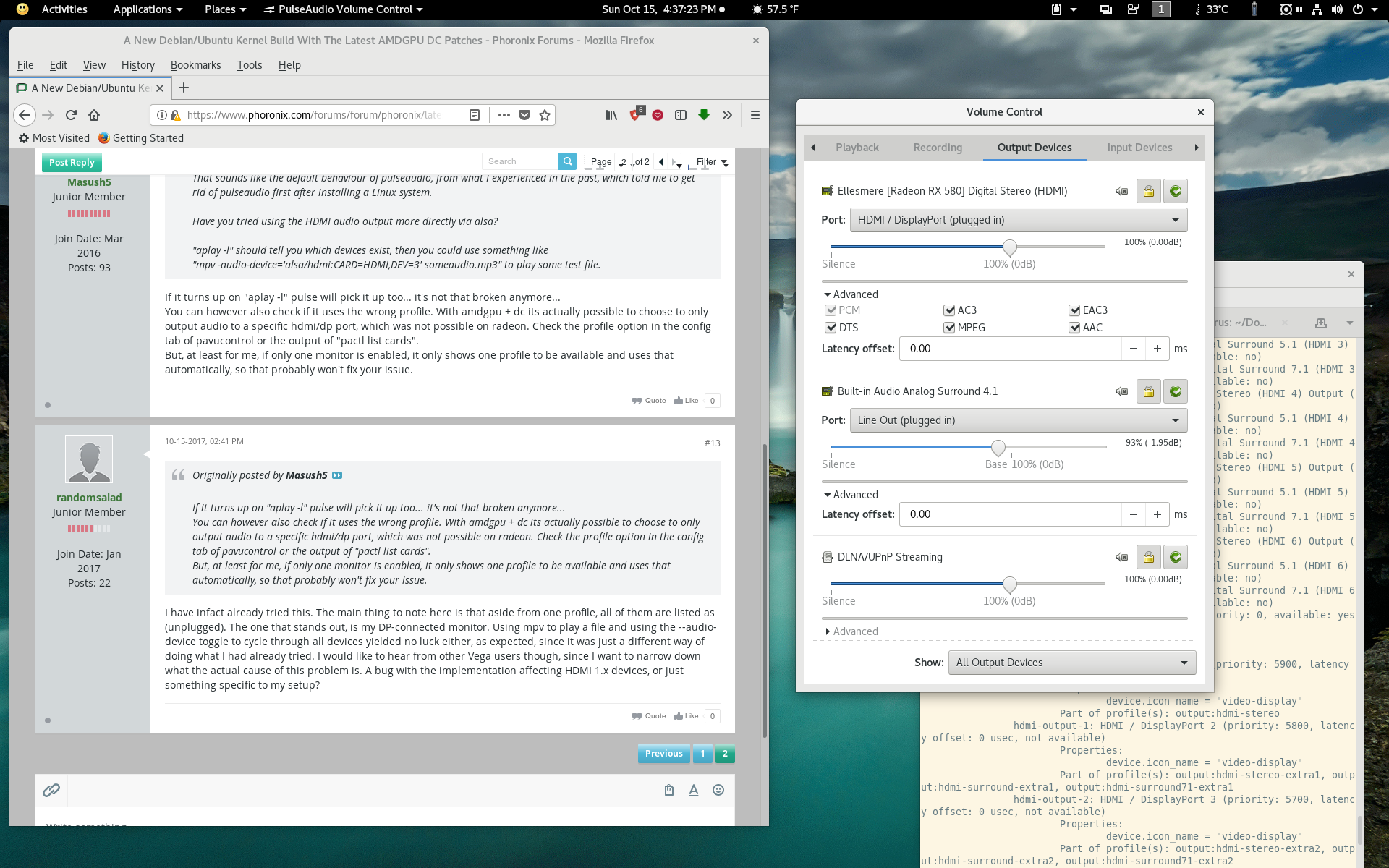Originally posted by randomsalad
View Post
Have you tried using the HDMI audio output more directly via alsa?
"aplay -l" should tell you which devices exist, then you could use something like
"mpv -audio-device='alsa/hdmi:CARD=HDMI,DEV=3' someaudio.mp3" to play some test file.



Comment